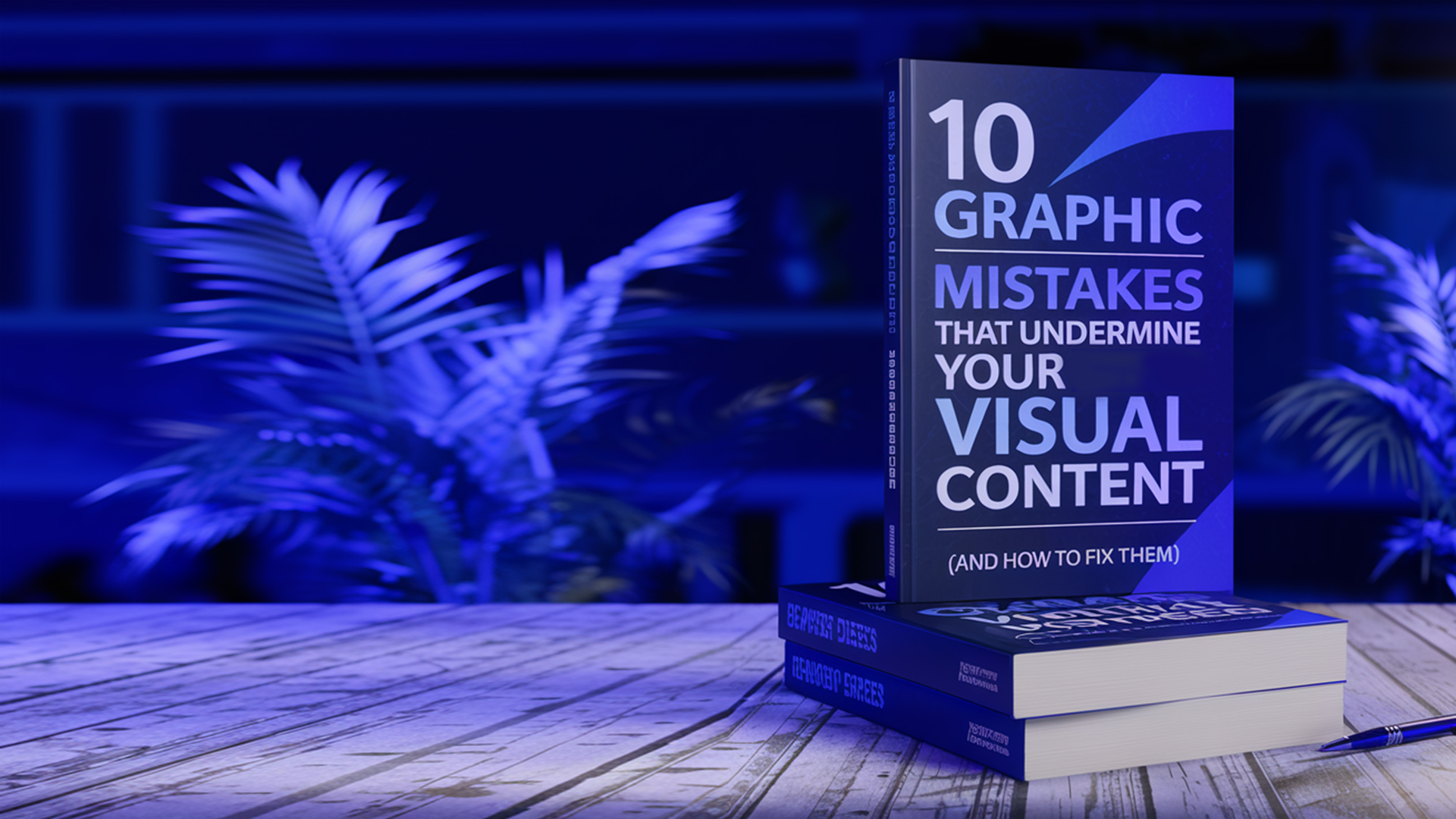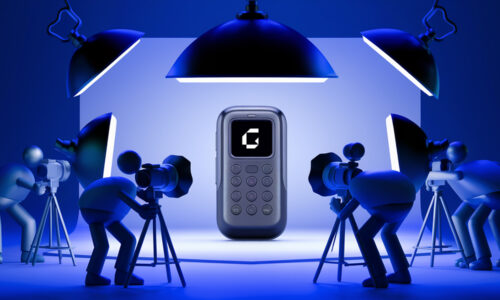
10 Graphic Design Mistakes That Undermine Your Visual Content (And How to Fix Them)
- graphicalization
- May 31, 2025
- Blog
- 0 Comments
Graphic design plays a critical role in how information is shared, understood, and remembered. Whether you’re promoting a business, creating educational materials, or engaging on social media, strong visuals help your message stand out. However, common design mistakes can weaken that message and reduce the impact of your work.
Even experienced marketers, content creators, and designers sometimes overlook small design flaws that can lead to poor engagement or confusion. In this guide, we’ll explore ten of the most common design errors—and more importantly, how you can correct them to create cleaner, more effective visual content.
1. Cluttered Layouts
A cluttered design overwhelms the viewer. When too many elements—like text blocks, icons, images, and shapes—compete for attention, it becomes difficult to know where to look. This lack of visual focus can cause people to scroll past your content without reading or engaging.
How to Fix It:
- Prioritize the most important message and make it the focal point of your design.
- Limit the number of elements on the screen or page.
- Use white space strategically to give your content breathing room and increase readability.
- Adopt a grid layout to organize items cleanly and consistently.
Remember, simplicity doesn’t mean boring—it means clarity. A clear design helps your audience absorb your message quickly.
2. Poor Typography Choices
Typography isn’t just about choosing pretty fonts—it’s about legibility and tone. Using too many fonts, inconsistent text sizes, or stylized fonts that are hard to read can quickly ruin an otherwise good design.
How to Fix It:
- Stick to two or three typefaces—typically one for headings and one for body text.
- Make sure the font size is readable across all devices.
- Align text consistently and maintain uniform line spacing.
- Choose fonts that match the mood and purpose of your design (e.g., clean sans-serif fonts for tech; elegant serif fonts for luxury).
Typography should guide the reader smoothly from one section to the next, not distract or confuse.
3. Misuse of Color
Color is one of the most powerful elements in design. But when used incorrectly, it can distract, mislead, or simply make your content unreadable. Common color mistakes include poor contrast, clashing color schemes, and overuse of bright or saturated tones.
How to Fix It:
- Choose a well-balanced color palette—typically one main color, one or two secondary colors, and a neutral background.
- Use strong contrast between background and text to ensure readability.
- Understand the psychology of color: different colors evoke different emotions (e.g., blue suggests trust, red conveys urgency).
- Test your design in grayscale to ensure that people with color vision deficiencies can still navigate it.
Consistent color usage builds brand recognition and makes your visuals more cohesive.
4. Lack of Visual Hierarchy
Visual hierarchy is about directing the viewer’s eye to the most important information first. If everything in your design looks the same, nothing stands out, and users may miss your key message entirely.
How to Fix It:
- Use size, color, boldness, and placement to create a clear order of importance.
- Headings should be larger and more prominent than body text.
- Important calls-to-action should be bold, high-contrast, and placed where the eye naturally lands (typically the center or bottom right).
Establishing a clear visual hierarchy helps your audience understand your message faster and more accurately.
5. Low-Quality or Inappropriate Images
Using blurry, pixelated, or irrelevant images can make your design look unprofessional. It may also reduce trust, especially in business or educational content.
How to Fix It:
- Always use high-resolution images suited to the output format (print, web, social media).
- Choose photos or graphics that support your message, not just ones that look attractive.
- Avoid generic stock photos that feel fake or overly posed.
Where possible, invest in custom visuals or use high-quality, free resources like Unsplash, Pexels, or Pixabay.
6. Inconsistent Branding
Designs that don’t follow brand guidelines can confuse your audience and weaken your brand identity. This often happens when using different colors, fonts, or logo placements across different platforms.
How to Fix It:
- Create a brand style guide that outlines your brand’s fonts, colors, logo usage, and tone.
- Use the same fonts and color palette in all visual materials.
- Place your logo consistently and ensure it’s legible and clear on all backgrounds.
Consistent branding makes your content feel polished and helps build trust and familiarity with your audience.
7. Overuse of Visual Effects and Filters
It’s tempting to add drop shadows, glows, gradients, and filters to make designs “pop,” but overdoing it can quickly make your content look dated or amateurish.
How to Fix It:
- Apply effects with care and purpose. If it doesn’t improve readability or visual appeal, leave it out.
- Use flat or minimal design styles when in doubt—they’re modern, clean, and widely preferred.
- Keep filters consistent across photos to maintain a cohesive look.
The best designs often look effortless. Aim for subtlety and clarity over flashiness.
8. Poor Alignment and Spacing
Even if you choose great colors and fonts, poor alignment can make your design feel disorganized. Uneven spacing or misaligned elements distract the viewer and make the content harder to read.
How to Fix It:
- Use alignment tools in your design software to line up text, images, and icons properly.
- Maintain consistent margins and padding between sections.
- Apply uniform spacing between lines of text and around graphic elements.
Good alignment creates a sense of balance and professionalism in your designs.
9. Not Designing for Mobile
Today, much of your audience will see your designs on their phone or tablet. If your content isn’t mobile-friendly, it may look cramped, be hard to read, or break entirely.
How to Fix It:
- Test your design on multiple screen sizes to ensure everything looks correct.
- Use larger text and fewer elements to keep layouts clean and scannable.
- Stack content vertically rather than placing elements side by side.
Mobile-first design isn’t just a trend—it’s essential for reaching modern audiences effectively.
10. Lack of a Clear Call-to-Action (CTA)
A design might be beautiful, but if it doesn’t tell the viewer what to do next, it’s not effective. Whether it’s clicking a link, signing up, or making a purchase, the call-to-action (CTA) should be clear and easy to find.
How to Fix It:
- Include one clear CTA per design.
- Use color, contrast, and placement to make the CTA stand out.
- Keep your CTA language short, action-oriented, and specific (e.g., “Download Now,” “Get a Quote,” “Learn More”).
A clear CTA turns attention into action—don’t leave your audience guessing.
Frequently Asked Questions (FAQs)
What’s the biggest design mistake most people make?
One of the most common mistakes is clutter—trying to fit too much information into one design. Clean, focused layouts with clear hierarchy usually perform much better.
How do I choose the right colors for my design?
Start with a simple color palette that reflects your brand or message. Use tools like Coolors.co or Adobe Color to test combinations. Always check for readability and contrast.
Is it okay to use design templates?
Yes. Templates are helpful, especially for non-designers. Just be sure to customize them to fit your brand, and avoid relying too heavily on default designs.
How important is typography in graphic design?
Very important. Poor typography can make your content hard to read and feel unprofessional. Choose readable fonts, use consistent styles, and maintain proper spacing.
What tools can help me improve my design skills?
Some beginner-friendly tools include Canva, Figma, Adobe Express, and Crello. For learning, websites like Skillshare, Coursera, and YouTube offer great design tutorials.
Final Thoughts
Great design is more than just making things look good—it’s about communication, clarity, and creating experiences that resonate. By avoiding these common mistakes, your visual content will be more engaging, more professional, and more effective.
Whether you’re designing a social media post, a business flyer, or a website banner, focus on the fundamentals: clean layouts, smart use of color, readable typography, and a clear message. Design with purpose, and your visuals will not only catch attention—they’ll deliver results.



